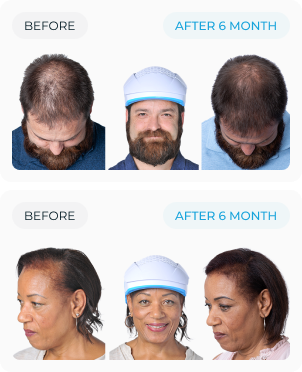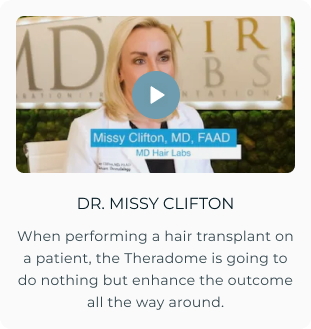Hair loss gets attention—fast. And when it’s sudden, excessive, or just feels out of place, it doesn’t take long before a deeper fear kicks in. For many, that fear is cancer. Search engines get hit daily with phrases like “is hair loss a sign of cancer,” often from people dealing with unexplained shedding and bracing for the worst. While most causes of hair loss are non-life-threatening (like stress, hormones, or iron deficiency), cancer does enter the conversation—just not in the way you might assume.
The thing is… cancer itself rarely causes hair loss directly, but there are exceptions. Certain rare cancers, specific autoimmune-like responses, and even scalp tumors can disrupt follicle health. That said, the far more common culprit behind cancer-related hair loss is treatment—especially chemotherapy, radiation, and some targeted drugs. In this article, we’ll break down when hair loss should raise a red flag, how treatments factor in, and what you can actually do if it happens.
Can Cancer Cause Hair Loss?
In most cases, hair loss and cancer symptoms are not directly connected. However, there are medically recognized exceptions. Certain skin cancers on the scalp or scalp metastases—when cancer spreads to the skin—can disrupt local follicles and cause patchy shedding. These are uncommon and rarely the first sign of trouble.
Another lesser-known link involves paraneoplastic syndromes, where the body’s immune response to cancer unintentionally targets other tissues—like hair follicles. These rare immune-triggered cases can result in diffuse thinning or patchy hair loss. That said, these instances are the outliers, not the rule. Hair loss caused directly by cancer is rare, and almost always accompanied by other warning signs like persistent lesions, fatigue, or systemic symptoms.
Hair Loss from Cancer Treatments
Here’s where things shift from rare to routine: most cancer-related hair loss stems not from the disease itself, but from the treatments used to fight it. Chemotherapy, radiation, and targeted therapies can all interfere with the natural hair cycle—either by damaging the follicles directly or disrupting the biological systems they rely on.
Chemotherapy and Hair Loss
Chemotherapy works by attacking rapidly dividing cells—great news for fighting tumors, not so great for your hair follicles. That’s why the chemotherapy hair loss timeline usually begins around 1 to 3 weeks after your first infusion. Hair loss tends to be diffuse and can include eyebrows, eyelashes, and body hair. Regrowth often starts 1 to 2 months after chemo ends, although new strands may come back finer or curlier than before.
Radiation Therapy and Hair Loss
Radiation therapy and hair loss go hand in hand—but only when the scalp is part of the treatment field. The damage is localized to the area being treated, so a brain tumor may result in patchy loss in the radiation zone. Depending on the dose, the loss could be temporary or permanent. Lower doses usually mean hair regrows within a few months; higher doses can permanently damage follicles and stop regrowth altogether.
Targeted Therapy and Immunotherapy Effects
Modern cancer treatments like targeted therapy and immunotherapy have changed the game. These drugs don’t always cause full-blown baldness, but they can lead to hair thinning, slowed growth, or even unusual changes in hair color and texture. EGFR inhibitors, for example, are notorious for affecting both the scalp and body hair.
Meanwhile, immune checkpoint inhibitors may result in autoimmune-driven alopecia, where the body mistakenly attacks its own hair follicles. These effects tend to be unpredictable, but in most cases, they reverse after the drug is stopped or adjusted. Still, they qualify as valid cancer treatment side effects—and ones that deserve just as much support and management as the more visible symptoms.
How to Manage Hair Loss Due to Cancer Treatments?
Hair loss may not be dangerous—but that doesn’t mean it’s easy. Preparing emotionally and practically can take some of the sting out of it and help you stay grounded through a very ungrounding process.
Prepare in Advance
Talk to your health care team or oncologist before treatment starts. Ask about the likelihood of hair loss from cancer treatment, when to expect it, and whether it's partial or total. Many people choose to cut their hair shorter before it starts falling out or shave it completely to avoid the emotional toll of shedding. Others opt for head coverings early, so they’re ready to go. Planning ahead helps restore some control—and when you're facing cancer, control matters.
Gentle Hair Care
Switch to a fragrance-free, sulfate-free shampoo. Skip the curling irons, hot tools, and harsh chemicals. Even if your hair starts thinning, continue washing gently to keep the scalp clean and reduce buildup. Avoid tight styles and brushes with metal bristles. Like soft, minimal, and low tension—that’s the formula while follicles are fragile.
Emotional and Social Support
Hair loss during cancer treatment often feels more personal than medical. It’s about identity, self-image, and visibility. Support groups—online or in person—can normalize the experience. Some hospitals offer wig banks or scarf-tying tutorials. Others provide referrals to therapists who specialize in oncology care. Don’t underestimate how powerful it is to hear “I get it” from someone who actually does.
Topical Treatments
While no topical can fully prevent shedding during active treatment, minoxidil may help reduce the severity of loss and slightly speed up hair regrowth after chemotherapy. Studies show it may shorten the duration of telogen (resting) phase post-treatment. However, always clear it with your oncologist before use—especially if your skin is already irritated or sensitive from therapy.
Conclusion
So—is hair loss a sign of cancer?
Occasionally, yes—but almost never as a first clue. Most cancer and alopecia connections are indirect, rare, or tied to treatment—not the disease itself. The overwhelming majority of hair loss cases are unrelated to cancer and have far more common explanations like hormones, stress, or nutrition.
Still, if your hair is shedding rapidly and you’re unsure why, it's smart to talk to a doctor. When cancer is involved, hair loss typically appears after diagnosis—not before—and is nearly always linked to therapy. And here’s the good news: for most, hair loss after chemotherapy is temporary. Hair regrows, texture normalizes, and life—with or without every single strand—moves forward. With the right prep and the right mindset, you don’t just get through it. You own it.
Low Level Laser Therapy (LLLT) devices like Theradome can help you regrow your hair after the underlying cancer is treated.

























